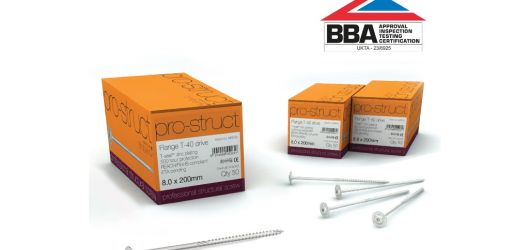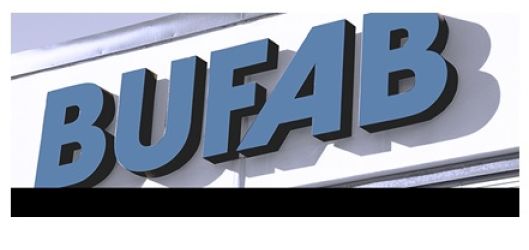
Specialist supplier of fixings and fasteners, Aptus Fasteners is highlighting the need for caution over claims that some screws on the market specifically meet the updated requirements of The Building Regulations 2010 Part L Volume 2: Buildings other than dwellings.
To pave the way for the implementation of the Future Homes and Building Standards (FHBS) in 2025, Part L has recently been updated and now sets out energy efficiency targets that must be adhered to when constructing, renovating or extending properties.
By focusing on aspects of the building envelope such as airtightness and insulation to conserve fuel and power, the now enhanced Part L aims to help decarbonise the UK’s building stock and contribute to the Government’s plans to achieve net zero by 2050.
“We wanted to offer impartial advice on Part L fixing requirements in order to minimise any confusion,” explains Winston Kilburn, Commercial Sales Manager at Aptus Fasteners. “We feel there is a very real risk of people choosing the wrong solutions based on inaccurate information and our concern is that this could have major implications in terms of quality, reliability, conformity and even safety.”
He continues: “Approved Document L of the Building Regulations, which applies to England and Wales, as well as Section 6 in Scotland, set out a limiting U-value for different elements of a structure such as its doors, windows and walls. Taking roofs for example, these need to have a limiting U-value of 0.16 W/(m2K) for new dwellings whilst for refurbished existing dwellings it is 0.15 W/(m2K). This denotes the maximum amount of heat from within the property that should transfer through this element. To achieve this level of thermal efficiency, thicker insulation is required, often complemented by the inclusion of additional insulation fixed to the outside of the rafters. To securely fix through all of this insulation into the roof rafters, it’s easy to think that all you need are longer screws – and especially as Part L makes no specific reference to the type of fixings to be used. In reality however, it’s not anywhere near as simple as that.”
Aptus Fasteners is keen to point out that as well as screws being of sufficient length, it’s equally important that they offer the right performance characteristics.
Whilst some CE marked screws are certainly up to the task, there is no impartial or immediate verification of that fact. They have been CE marked in accordance with the Construction Products Directive (CPD) which is based solely on Eurocode 5 (EC5). This harmonised European Standard covers the wider design of timber structures, but it doesn’t focus on fastening insulation materials.
In order to enjoy complete reassurance that a screw is fit for the purpose of fastening thermal insulation materials on top of rafters, it is essential to choose a product with a European Technical Assessment (ETA) or a UK Technical Assessment (UKTA). These ETA / UKTA certified screws have been specifically tested for fastening thermal insulation materials on top of rafters as part of their certification process.
They have also shown they are capable of bending to an angle of 45° without fracturing or breaking. This is a further requirement of their certification in line with European Assessment Document (EAD) 130118-01-060.
This flexibility ensures they can cope not only with the natural movement of timber but also with the dynamic forces placed on roof structures such as shear wind load and wind pressure / suction.
As a gold member of the Structural Timber Association (STA), Aptus Fasteners is working with the UK’s leading organisation for the structural timber sector to seek new ways of providing guidance on the suitability of screws for fixing through insulation, battens and boards into an underlying roof structure. It is also offering a free calculation service which is available upon request.
Concluding, Winston adds: ‘Our main motivation at Aptus Fasteners for highlighting this issue is altruistic. It revolves around ensuring benefits and peace of mind for industry professionals and building occupiers.”



